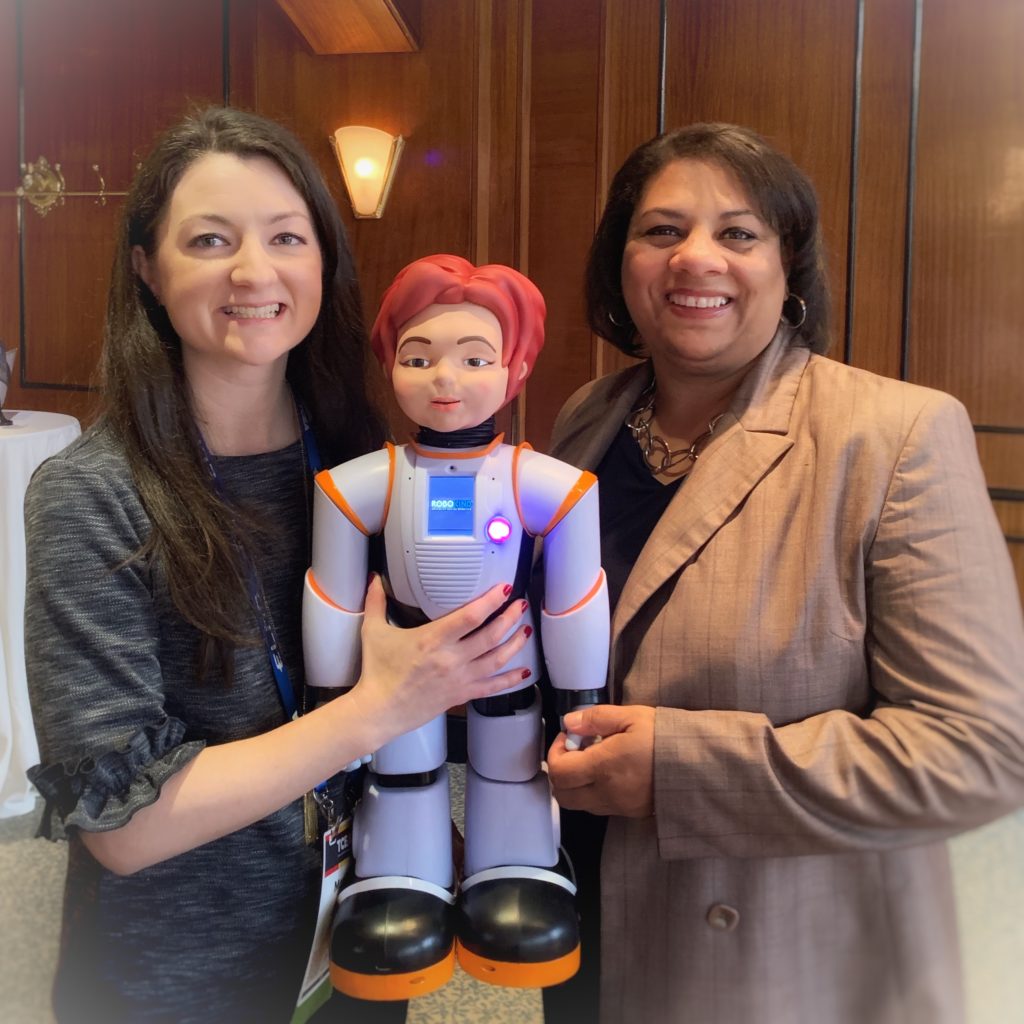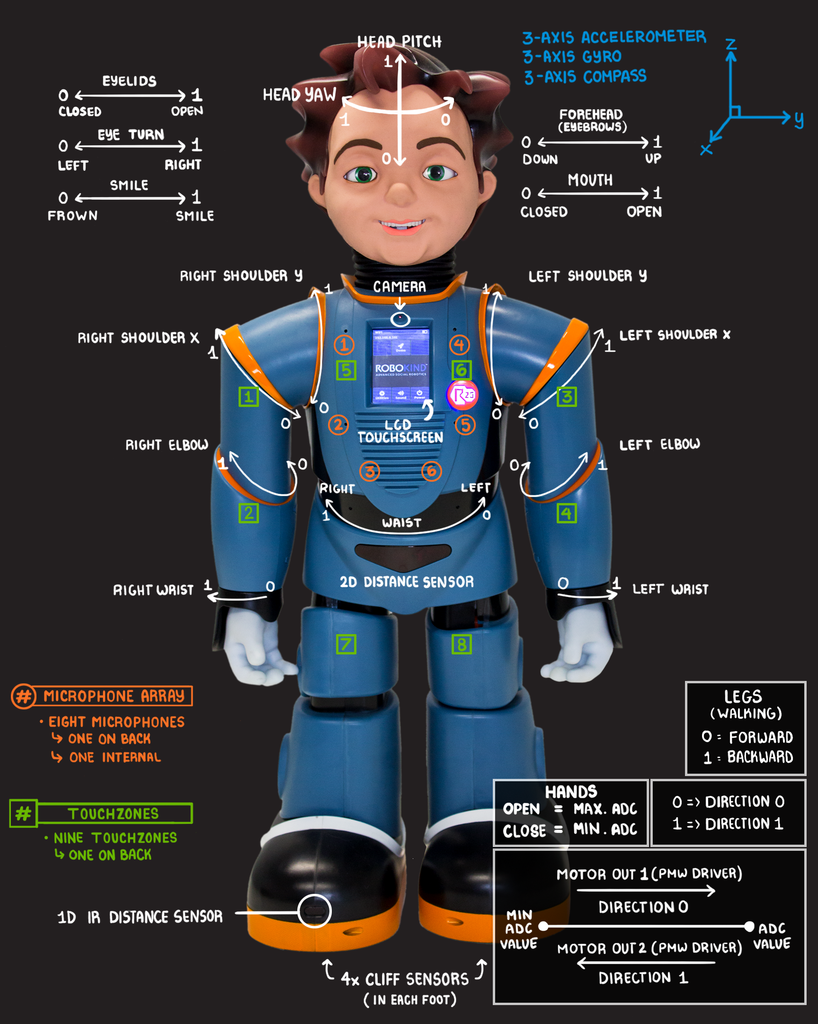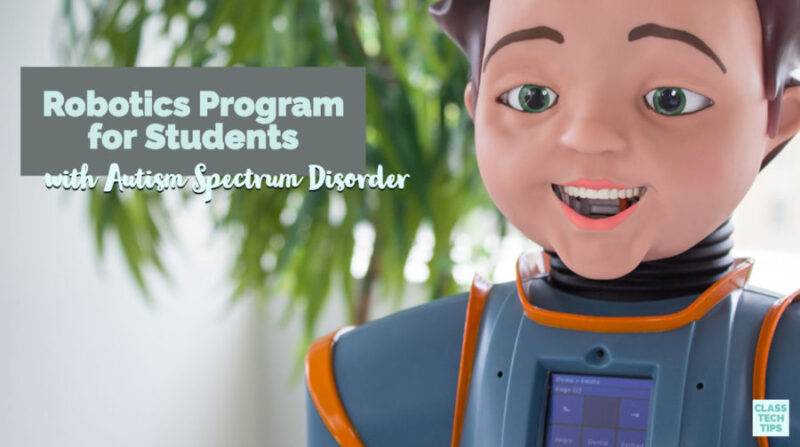What does robotics look like in your school? In South Carolina, the Department of Education is in the midst of a pilot program that is reshaping the way you might envision robotics used in schools. This robotics curriculum is helping students develop skills around social and emotional understanding, communication and self-regulation, and more!
At TCEA a few weeks ago I had the chance to sit down with Dr. Gregory Finn, the Chief Operating Officer of RoboKind, and Dr. Lisa Raiford, Education Associate for Autism at the South Carolina Department of Education. With my parents relocating to South Carolina just a few years ago, I was especially interested to hear about some of the exciting things going on in the state. Dr. Raiford was kind enough to share a program that is totally transforming the lives of students, families, and educators.

Robotics Curriculum for Students
RoboKind’s robots4autism is the first robotics curriculum pairing evidence-based practice and technology-aided instruction with the goal of helping students with Autism Spectrum Disorder improve social skills. The curriculum is delivered by a humanoid robot (a robot designed to look like a person) named Milo. The robot was designed to help teach students with Autism Spectrum Disorder to understand emotions and expressions. The goal is for students to learn and practice social behavior and responses.
The curriculum modules fall into different categories, with introductory modules, conversational modules, emotional understanding modules, and situational modules. Each module includes a series of lessons that help students navigate experiences both inside and outside of the classroom. It covers topics like how “Being a Guest at a Birthday Party” and “Initiation Greetings.” Here’s a great video with a story of this in action!
The robots4autism Pilot Program
The pilot program taking place in South Carolina is a three-year pilot with 15 school districts in the state. The participating districts represent a range of sizes, geography, and demographics, and over 300 students are currently participating in the pilot program. The program facilitators include special education teachers, specialists, and paraprofessionals.
According to Dr. Raiford, the first year of the pilot had three core objectives, and both quantitative and qualitative data was collected and analyzed. The goals of year one were to achieve generalizing or transference to human-to-human interactions in the areas of social-emotional understanding, communicational dynamics, and self-regulation or executive functioning.
With thousands of lessons executed during this first year, ninety percent of students demonstrated mastery in these areas. You can also learn more about the pilot program and some of the highlights from the study in this executive summary document. Although exploring these data points was definitely interesting, I was most excited to chat with Dr. Raiford about her experience with the pilot.
Dr. Raiford also shared how the educators participating in this program worked through the lessons with fidelity and had clear connections with families. There was support with state- and school-level leadership to make the program happen too. I often discuss formative assessment (aka #FormativeTech) on the blog, and Dr. Raiford mentioned data collection in our conversation too. She explained how the collection of data was very actionable, so data was used strategically to support students, and also shared with families.
Robotics Curriculum in Action
In the video embedded above and linked here, you can get a feel for the excitement around the pilot program happening in South Carolina. But if you want to start using this curriculum too, you can start right away. robots4autism uses the curriculum described earlier in the post along with Milo. I had a chance to “meet” a Milo humanoid robot along with Dr. Raiford and Dr. Firn at TCEA. As you can see in my beaming smile in the picture above, Milo’s energy is contagious, and it’s just so exciting to see him in action.

Milo can speak, smile, laugh and walk across the room too. This technology-aided intervention for students with Autism Spectrum Disorder also uses evidence-based practices to help students improve social skills. Social narratives, video modeling, visual supports, natural modeling and prompting are all part of the picture. Milo also has a full range of facial expressions and uses consistent, simplified language. Students can work through the same lesson with Milo multiple times if needed. The robot can reinforce interactions and skills taught by the teacher too.
So are you ready to jump in? You can learn more about Robots4Autism and their powerful robotics curriculum by visiting their website. I certainly can’t wait to hear what you think of this dynamic EdTech tool for students with Autism Spectrum Disorder!
If you would like to see Milo in action, schedule a personalized “meeting” with him by clicking HERE!







